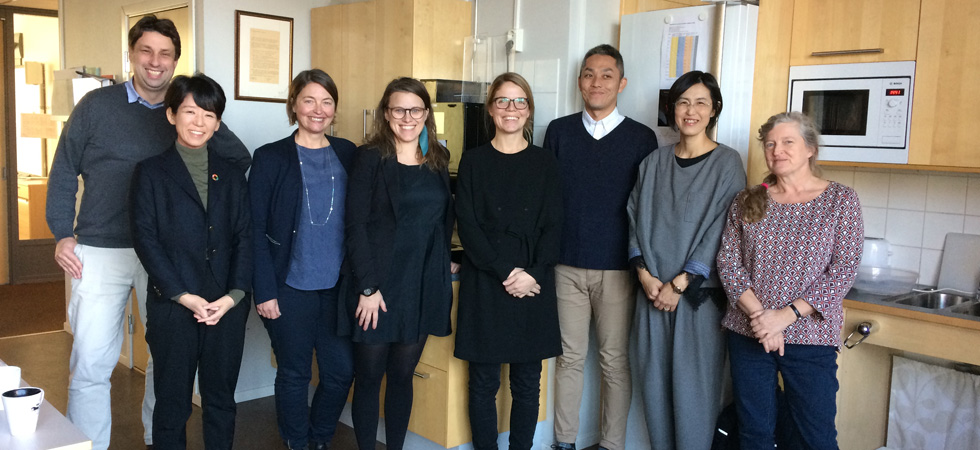
On October 21, 2018, three city planners from Kamakura City arrived at Umeå airport in the north of Sweden. Kamakura and Umeå have been selected to form a city -to- city partnership within the International Urban Cooperation (IUC) programme promoted by the EU.
Ms. Kaori Aoki, Mr. Koji Iizumi and Ms. Naomi Kato came to Umeå for a three day visit to learn about sustainability work and meet counterparts who will make a study visit to Kamakura in May 2019.
Ms. Susanne Thurén, international strategist of Umeå municipality welcomed the visitors at the airport and took them to their hotel using a car from the municipal car pool. On the way she explained that the short distance to the airport makes it popular to go there by bicycle when departing for a short business trip. Umeå therefore built a bicycle garage at the airport.
The next day started with a discussion led by Mr. Albert Edman, strategic development coordinator, on how the United Nations 17 goals for sustainable development (SDGs) can be integrated into city development strategies. This was also a day for junior high school students to take part in a Council for Sustainable Development - an opportunity for them to convey ideas and opinions on sustainable production and consumption to local politicians. The visitors from Kamakura talked to a group of girls who set up criteria to evaluate sustainability efforts by restaurants in Umeå.
Ms. Carina Aschan, Project manager of the smart city project RUGGEDISED gave a guided tour of the Umeå University Campus, in focus for energy efficient city planning. She explained how sensors measure the amount of carbon dioxide in rooms due to human presence there. The level of heating is adjusted accordingly, saving on energy in empty spaces.
On the last day, Ms. Linda Gustafsson, gender equality strategist, took the visitors on a bus tour to look at the city through "gender glasses". How can a tunnel under train tracks make women passing through at night feel safe? Umeå found it should be bright, wide, nicely decorated and without big pillars or dark corners where someone might hide. The afternoon continued with a discussion on differences in lifestyle and working style of both women and men in Japan and Sweden.
Umeå and Kamakura are very different. While the population of Umeå is increasing rapidly, Kamakura has a shrinking population. Kamakura has an ancient history and is located near the capital, attracting many tourists. Umeå is at a distance from the center of Sweden but full of young students. In this mix of different qualities both cities see an asset in well educated citizens with a high degree of awareness and a strong will to participate in efforts for sustainability. Both cities are keen on innovation, citizen dialogue and investing in people to create social capital. This common ground will be explored further when Umeå visits Kamakura in May 2019.
Text: Pairing coordinator Lena Lindahl
Further information